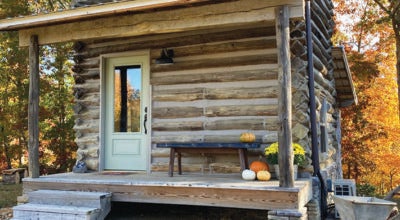The Literary Corner: Renegade Writers Guild
Published 8:28 am Thursday, June 15, 2017
“Silencing of the Tone”
By Kevin F. Wishon
I’ve seen you before, and I know why you are here. For years, I’ve watched you all come and go with your mobile phones, completely ignoring me. Years ago, you were thankful for my existence and occasionally took advantage of my services. However, as I became less relevant, I knew this day would eventually come; now, here you are.
I don’t blame you nor do I resent what you must do. I understand you are just doing your job. I sense if you could, you would have ignored the work order just for the sake of nostalgia, but ultimately, you have no say in the matter. I saw the work order you laid on the floor when you arrived. It was cold and surgical in direction, and I’m certain this request gave you no pleasure.
It read: “Lobby payphone removal – All wiring capped/covered – Anchor bolts leveled flush with the existing floor.”
How this decision to end my existence came about, I’m unsure. Certainly, I’m still functional and can serve my purpose as well as I did the day of my installation. Aesthetically speaking, I’m in good shape despite years of day-to-day wear. Therefore, I can only determine my fault is I can no longer attract the nickels, dimes, and quarters that once entered my coin drop so regularly.
As you searched for a tool to begin the job, I couldn’t help but feel betrayed. Did I not serve my purpose consistently even when the power was out? Whether storms had knocked out cell towers or sunspots were ravaging signal strengths, my dial tone remained strong and reliable. But alas, my demise will not be heralded with any deserved appreciation.
While you searched for the wire behind my booth, I couldn’t help but think about all the people I once served: emergencies, thinking of you, everything’s fine, I need a ride, and collect phone calls; I enabled people to make them all. As you disconnected the wire from the phone jack, the comforting sound of the dial tone began to fade away. At that moment, I realized my fault was not convenience, but instead, I was no longer convenient enough. Eventually, you will miss me.
“Maps”
By Marie Craig
I have always enjoyed studying maps. As a child, when we would travel from Black Mountain, my home, to this area to visit relatives, I would have a road map in my lap and trace our progress. It was fascinating to me to watch the routes and turns and little towns, and I would wonder about their development and naming. I have since acquired a book The North Carolina Gazetteer that gives the origin of names of towns and geographical features. I’ve used this often to locate an area or to learn more about the derivation of naming.
In Davie County, there are many interesting old maps. The history room at the library sells four. John Thomas Alderman sketched a map in 1887 that shows communities, homes, creeks, mills, ferries, roads, churches, and schools. The schools just had numbers. Evidently, he had an accompanying list that showed the name of the school by that number. He was superintendent of schools in Davie County from 1885 to 7 September 1891.
The second map was drawn by Professor Wilson F. Merrell in 1928. He was a teacher in Davie County schools for 62 years and principal of Fork Academy for many years. He also had a store in Fork and managed the post office in the store. This map shows churches, schools, homes, railroad, ferries across the Yadkin River, and roads. Highway 64 was numbered highway 90, highway 601 was numbered highway 80, and highway 158 was called highway 65 back then.
The third map was created in 1977 by Fred Hughes. It shows roads, creeks, ferries, schools, homes, and churches from 1750 to 1800.
Map number four is the Andrew Lagle Land Grant Map. He searched county records in Davie and Rowan to determine original boundaries. He flew in an airplane to look for signs of regions.
There are several interesting old Davie maps online. You can view a 1927 soil map which also has houses indicated by small squares. http://dc.lib.unc.edu/cdm/singleitem/collection/ncmaps/id/323/rec/12 You can enlarge this map and show different townships. Notice that more houses were built out from the eastern side of North Main Street than the western side. Roads are not named, but with a current map, you can see Church Street, Cemetery Street, etc.
Another map which explains why there are more houses to the east is the online topographic map. https://viewer.nationalmap.gov/basic/?basemap=b1&category=histtopo,ustopo&title=Map%20View. Zoom in on the US map until you locate Mocksville. As you look at North Main Street, you will see that the contour lines to the east are much farther apart than the ones to the west. This means that the east side is much more level land.
The two addresses above are tedious to type into the Internet. If you’ll go to the site which I manage, http://www.rootsweb.ancestry.com/~ncdavhgs/ and scroll down to Map Descriptions, this article will appear, and you can click on the links to find the two maps above.
GoogleMaps and GoogleEarth will keep you busy for a long time. Be aware that on GoogleEarth, you can go back in time with previous years of satellite images. Look at the top of the screen for a circle with an arrow draped on the top.
“Choices”
By Gaye Hoots
Many choices we are given,
So many choices we make.
The road to the mountains,
The sea, or the lake.
Old friends from childhood,
New friends, we meet.
Keep our families values,
Trade them in for what we seek.
Do we choose where we are going?
Do we know who we are?
Do we simply follow others,
Or our own guiding star?
Are we aware of the seeds we sow,
Of what we teach our kids?
Will they listen when we tell them,
Or simply repeat the things we did?
Those choices we are making
They shape who we become.
Please don’t make them blindly.
Stop and weigh each one.





